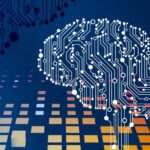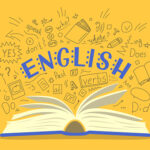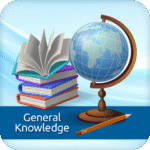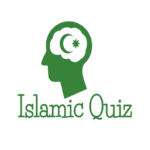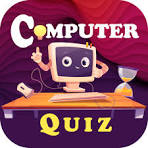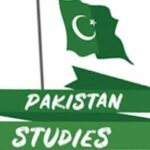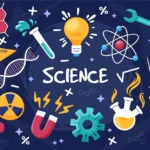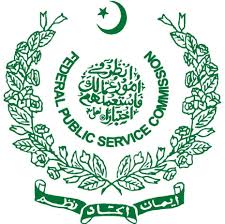LUMHS BS Nursing Entry Test MCQs
Biology – 30 MCQs
1. The basic structural and functional unit of life is called:
A. Tissue B. Organ C. Cell D. Atom
2. The powerhouse of the cell is:
A. Ribosome B. Mitochondria C. Nucleus D. Golgi body
3. Photosynthesis occurs in:
A. Mitochondria B. Chloroplast C. Cytoplasm D. Ribosome
4. Which of the following is a prokaryotic organism?
A. Bacterium B. Fungi C. Algae D. Amoeba
5. Human blood is composed of plasma and:
A. Lymph B. Cells C. Water D. Minerals
6. Which organ filters blood in the human body?
A. Liver B. Kidney C. Lungs D. Heart
7. Which part of the brain controls heartbeat and respiration?
A. Medulla oblongata B. Cerebrum C. Cerebellum D. Thalamus
8. The longest bone in the human body is:
A. Tibia B. Femur C. Radius D. Humerus
9. Which of the following carries oxygen in blood?
A. Hemoglobin B. Plasma C. Platelets D. WBCs
10. The human heart has:
A. Four chambers B. Two C. Three D. One
11. Which vitamin helps in blood clotting?
A. Vitamin A B. Vitamin C C. Vitamin K D. Vitamin D
12. Which organ produces insulin?
A. Liver B. Pancreas C. Kidney D. Gall bladder
13. The normal human body temperature is:
A. 96°F B. 98.6°F C. 100°F D. 102°F
14. The main function of white blood cells is:
A. Carry oxygen B. Fight infection C. Clot blood D. Store fat
15. DNA stands for:
A. Deoxyribonucleic acid B. Deoxyribose acid C. Dextrose nucleic acid D. Deoxyribonic acid
16. The human lungs are protected by:
A. Skull B. Backbone C. Rib cage D. Pelvis
17. Which organ secretes bile?
A. Liver B. Pancreas C. Gall bladder D. Stomach
18. The smallest bone in the human body is found in the:
A. Nose B. Ear C. Finger D. Toe
19. Which part of the human body controls balance?
A. Cerebrum B. Cerebellum C. Medulla D. Pons
20. Which of the following diseases is caused by virus?
A. Influenza B. Cholera C. Tuberculosis D. Typhoid
21. Which blood group is called the universal donor?
A. O negative B. A positive C. AB positive D. B negative
22. The human skeleton is made up of about:
A. 150 B. 206 C. 250 D. 300
23. Which of the following is not an organ of the digestive system?
A. Stomach B. Small intestine C. Heart D. Liver
24. The exchange of gases in lungs occurs in:
A. Alveoli B. Trachea C. Bronchi D. Larynx
25. Which organ is responsible for excreting urea?
A. Kidney B. Liver C. Lungs D. Skin
26. Which part of the eye controls the amount of light entering it?
A. Retina B. Iris C. Lens D. Cornea
27. The digestion of protein begins in the:
A. Mouth B. Stomach C. Small intestine D. Liver
28. The human heart is made up of:
A. Smooth muscle B. Skeletal C. Cardiac muscle D. None
29. The functional unit of the kidney is:
A. Alveolus B. Nephron C. Neuron D. Axon
30. Which type of blood cell helps in clotting?
A. RBC B. Platelets C. WBC D. Plasma
Chemistry – 30 MCQs
31. The smallest particle of an element that retains its properties is called:
A. Molecule B. Atom C. Ion D. Compound
32. The atomic number represents the number of:
A. Protons B. Neutrons C. Electrons D. Nucleons
33. The atomic mass of an element is the sum of:
A. Electrons & protons B. Protons & neutrons C. Protons only D. Neutrons only
34. Which of the following is a noble gas?
A. Oxygen B. Helium C. Nitrogen D. Carbon
35. The chemical formula of water is:
A. HO B. H₂ C. H₂O D. H₂O₂
36. The pH of pure water at 25°C is:
A. 5 B. 6 C. 7 D. 8
37. Acids turn blue litmus paper:
A. Red B. Green C. Yellow D. Colorless
38. The process of solid changing directly into gas is called:
A. Condensation B. Sublimation C. Evaporation D. Melting
39. Which of the following is a chemical change?
A. Melting of ice B. Breaking of glass C. Rusting of iron D. Cutting of paper
40. The number of atoms in one molecule of oxygen gas (O₂) is:
A. 1 B. 2 C. 3 D. 4
41. The symbol “Na” represents:
A. Nitrogen B. Sodium C. Nickel D. Neon
42. The most abundant gas in Earth’s atmosphere is:
A. Oxygen B. Nitrogen C. CO₂ D. Argon
43. The SI unit of amount of substance is:
A. Molecule B. Atom C. Mole D. Gram
44. Which of the following is a compound?
A. Oxygen B. Nitrogen C. Water D. Hydrogen
45. Chemical bonding between atoms occurs due to:
A. Neutrons B. Electrons C. Protons D. Nucleus
46. Which subatomic particle carries a negative charge?
A. Proton B. Electron C. Neutron D. Nucleon
47. The molecular formula of carbon dioxide is:
A. CO₂ B. CO C. C₂O D. C₂O₂
48. Which of the following is a halogen?
A. Neon B. Chlorine C. Sodium D. Magnesium
49. The process of separating liquids by boiling and condensation is called:
A. Filtration B. Crystallization C. Distillation D. Evaporation
50. The chemical symbol for potassium is:
A. P B. Po C. K D. Pt
51. Which of the following is a base?
A. HCl B. H₂SO₄ C. NaOH D. CO₂
52. The formula of methane is:
A. CH₄ B. C₂H₆ C. C₂H₂ D. C₃H₈
53. Which acid is found in vinegar?
A. Citric B. Acetic C. Lactic D. Sulfuric
54. Common salt used in food is:
A. KCl B. NaOH C. NaCl D. Na₂CO₃
55. Which metal is liquid at room temperature?
A. Iron B. Mercury C. Copper D. Sodium
56. What type of bond is formed between two non-metal atoms?
A. Ionic B. Covalent C. Metallic D. Hydrogen
57. The formula weight of H₂O is:
A. 16 B. 17 C. 18 D. 19
58. Which of the following is not a mixture?
A. Air B. Steel C. Distilled water D. Soil
59. The gas produced during respiration is:
A. Carbon dioxide B. Oxygen C. Nitrogen D. Hydrogen
60. The element essential for making hemoglobin is:
A. Calcium B. Sodium C. Iron D. Potassium
Physics – 30 MCQs
61. The SI unit of force is:
A. Joule B. Newton C. Watt D. Pascal
62. The instrument used to measure temperature is:
A. Barometer B. Thermometer C. Ammeter D. Voltmeter
63. Speed is a:
A. Scalar quantity B. Vector C. Unit D. Force
64. The acceleration due to gravity on Earth is approximately:
A. 8.8 B. 9.8 m/s² C. 10.8 D. 11.8
65. The SI unit of energy is:
A. Joule B. Newton C. Watt D. Calorie
66. “Every action has an equal and opposite reaction” is:
C. Third law of motion
67. Force = Mass × ______
C. Acceleration
68. The instrument used to measure electric current is:
A. Ammeter
69. The energy possessed by a moving body is called:
B. Kinetic energy
70. The boiling point of water in Celsius is:
C. 100°C
71. Sound cannot travel through:
C. Vacuum
72. The rate of doing work is called:
B. Power
73. The SI unit of power is:
C. Watt
74. The change of state from liquid to gas is called:
B. Evaporation
75. The speed of light in air is approximately:
B. 3 × 10⁸ m/s
76. The color of an opaque object depends on:
B. The light it reflects
77. The SI unit of pressure is:
B. Pascal
78. The time taken by a pendulum to complete one swing is called:
A. Time period
79. The frequency of sound is measured in:
B. Hertz
80. The center of gravity of a uniform ball is at:
A. Its center
81. Which of the following is a non-renewable energy source?
B. Coal
82. Bending of light from one medium to another is called:
A. Refraction
83. Device converting electrical to mechanical energy:
B. Electric motor
84. Device used to measure potential difference:
B. Voltmeter
85. Law relating voltage, current, and resistance:
A. Ohm’s Law
86. Reflection of sound waves is called:
B. Echo
87. Unit of electric charge:
A. Coulomb
88. Heat always flows from:
B. Hot to cold
89. Device producing electricity using moving magnets:
C. Generator
90. The force opposing motion is called:
C. Friction
English – 10 MCQs
91. Synonym of “Begin”:
C. Start
92. Antonym of “Hot”:
C. Cold
93. Correct spelling:
B. Achievement
94. Correct verb:
He ____ his homework every evening.
C. Does
95. Correct preposition:
She is fond ____ music.
B. Of
96. Correct article:
He is ____ honest man.
B. An
97. Correct sentence:
B. She doesn’t like apples.
98. Correct passive voice:
“They clean the room every day.”
A. The room is cleaned every day.
99. Synonym of “Beautiful”:
C. Pretty


